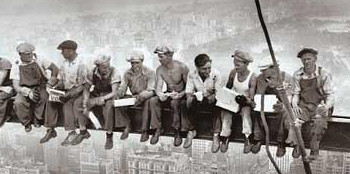Perhaps not everyone knows that this saying also has a longer version, which reads "At Carnevale, every prank is allowed… but let it taste of salt", that is a witty, clever prank.
This expression refers to the fact that Carnival, inspired by the Dionysian festivals of ancient Greece and the Saturnalia of ancient Rome, is a time when the social order is turned upside-down and all pranks are allowed.
The oldest celebrations of Carnival as we know it today date back to 1096, when in the Republic of Venice masks and costumes began to be worn to ensure anonymity to those who participated in the festivities and behaved in a way that was not in keeping with their social role. In this way, everyone could release their tensions and disturbances and riots were avoided. Masks and costumes have been passed down to us, but they have certainly lost their initial function of granting anonymity and social levelling.
Listen to the new episode of our podcast Italiano On-Air dedicated to the Italian Carnevale
Many of the masks that are still used in Italy today are connected to the so-called Commedia dell'Arte, the most popular theatrical form which started in Italy in the sixteenth century. Commedia dell'Arte was based on improvisations by professional actors who, starting from very generic plots, brought onto the stage the "masks", i.e. characters with fixed and stereotyped features. Actors would often wear masks to be more easily recognisable.
These characters are still very famous and can be seen during Carnival parades throughout Italy:
- Pulcinella: he represents a lazy and opportunistic servant. He is from Naples and wears a white costume and a black mask with a crooked nose. His name seems to derive from the corruption of a very common surname in Campania: Pulcinello or Polsinelli;
- Pantalone: miserly and grumpy, he is a penniless old merchant originally from Venice. This prickly character always complains about his lack of money; above all, he thinks he is authoritarian while always being teased by his wife, daughter and servants.
- Colombina: she is Pantalone's lively and mischievous servant;
- Arlecchino: he comes from Bergamo and is a cheating and always hungry servant. He is recognisable by his multicoloured diamond costume;
- Brighella: also from Bergamo, he is a faithful servant, attentive to the needs of his master;
- Balanzone: he comes from Bologna and wears a black toga; he represents an elderly, conceited and pedantic doctor;
- Gianduja: he is the embodiment of the personality of the people from Piedmont: firm on their positions but true to their word and always in a good mood;
- Stenterello: he is characterised by his extremely thin body and the fact that he is haunted by injustice, which he can only overcome by relying on his wits. He comes from Florence;
- Captain Spaventa: he is a soldier of fortune originally from Liguria. He is a cultured and sensible character, but also ambitious and a perpetual dreamer;
- Pierrot: although owing its name and success to France, this is an Italian mask, whose original name was Pedrolino. Whereas he initially represented the character of a cunning servant, he gradually turned into a melancholic mime in love with the moon;
- Rugantino: he's a braggart - albeit a good-hearted one. His name comes from the Roman word Rugà, which indicates arrogant and insolent behaviour;
- Meneghino: his name, which comes from the dialectal diminutive of Domenico, has become the adjective that describes the inhabitants of Milan. He represents an intelligent servant, who often has more common sense than his masters.
These characters are so popular in Italian culture that they even feature in some idioms. The character of Arlecchino / Harlequin has undoubtedly been made famous by Carlo Goldoni’s comedies, which often feature him as the protagonist of countless intrigues and comic events. So we say fare l'Arlecchino, to indicate buffoon-like behaviour. From the plot of a comedy by Goldoni comes the expression fare l'Arlecchino servitore di due padroni (servant of two masters) to indicate a person who changes his mind or attitude according to the opportunity of the moment or simultaneously serves the interests of two opposing parties. The term arlecchinata / harlequinade is used to indicate a practical joke. Referring to the character's multicoloured costume, we can say that someone looks like a Harlequin when they wear too many colours or mismatched clothes. There’s a curious story about this character’s multicoloured attire: legend has it that Harlequin was the son of a very poor woman, who was forced to send him to school with worn and patched clothes. The other children’s mothers, moved by the sight of such a shabby-looking child, decided to make him a new suit, but having only access to scraps of fabric, they produced the coloured diamond costume that we all associate with him.
Pulcinella is another very popular character: his characteristic is always managing to get out of trouble by making fun of the powerful. With his friendly and playful personality, he embodies the spirit of his hometown, Naples. We say fare il Pulcinella to indicate a person behaving in an opportunistic or fickle
manner; on the other hand, the expression le nozze di Pulcinella (Pulcinella’s wedding) indicates a party that ends with disagreements and quarrels or an endeavour that, despite starting very promisingly, ends soon and badly. A widely used expression is il segreto di Pulcinella (Pulcinella’s secret), to indicate a piece of information that, unbeknown to the interested party, is known to everyone else. The idiom derives from Pulcinella’s behaviour, revealing to all and sundry the information he is given in confidence with the recommendation to keep it secret.
The expression "uno stenterello", inspired by the Florentine character of the same name, indicates someone thin and gaunt. When someone finds themselves deceived and forced to pay hefty bills without their knowledge, we say paga Pantalone (Pantalone’s paying). The saying is inspired by the life of the Venetian merchant, constantly deceived by his family and servants. The expression used to mean that those who could afford to, paid, as did the rich Venetian merchant, but over time Pantalone
has become the symbol of citizens who often find themselves forced by their government to pay for useless investments or for investments that are only useful to the few.
The Piedmontese character of Gianduia, whose name comes from the dialectal expression Gioan d'la douja (John of the tankard), is not linked to any particular idiom, but the chocolates symbol of Turin, the gianduiotti, are named after him. They made their first appearance place during Carnival in 1865, when chocolate manufacturer Caffarel decided to promote their new product by handing it out on the streets by men dressed up as Gianduja. The new chocolates were henceforth called gianduiotti and even today Caffarel is the only company in Turin allowed to feature the mask of Gianduja on the golden wrappers of these delicious chocolates.
Read other curiosities about the Italian Carnevale:
Scuola Leonardo da Vinci Turin
The welcoming friendly atmosphere of our school will make you feel at home and you can relax with your classmates in the small gardens of the adjacent pedestrian area.
Latest posts by Scuola Leonardo da Vinci Turin (see all)
- The 4+1 unmissable suggestions for Christmas shopping in Turin - December 17, 2025
- What is the difference between the Carabinieri and the Police? - November 26, 2025
- 5+1 scenic spots in Turin with the Scuola Leonardo - October 15, 2025









